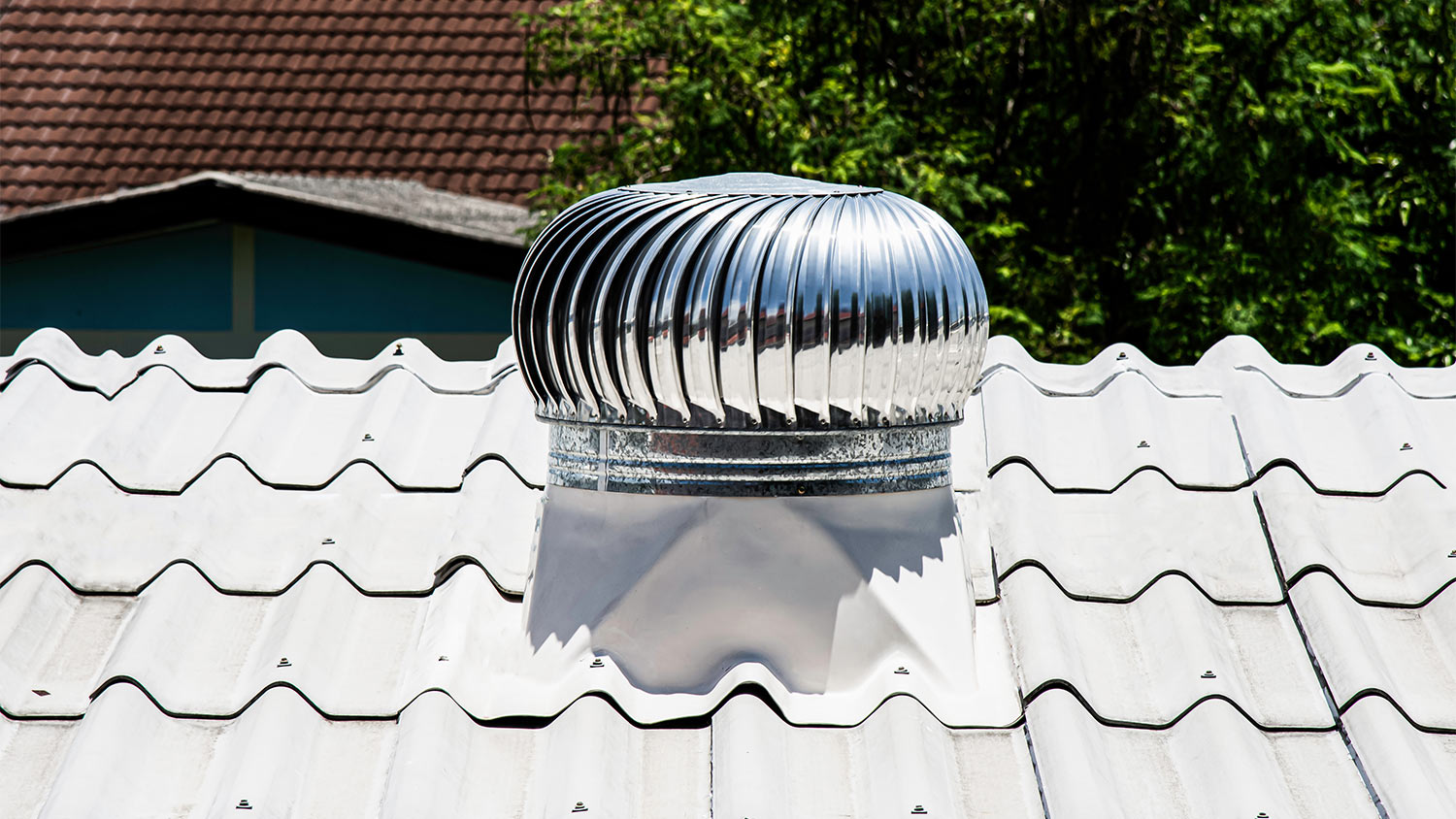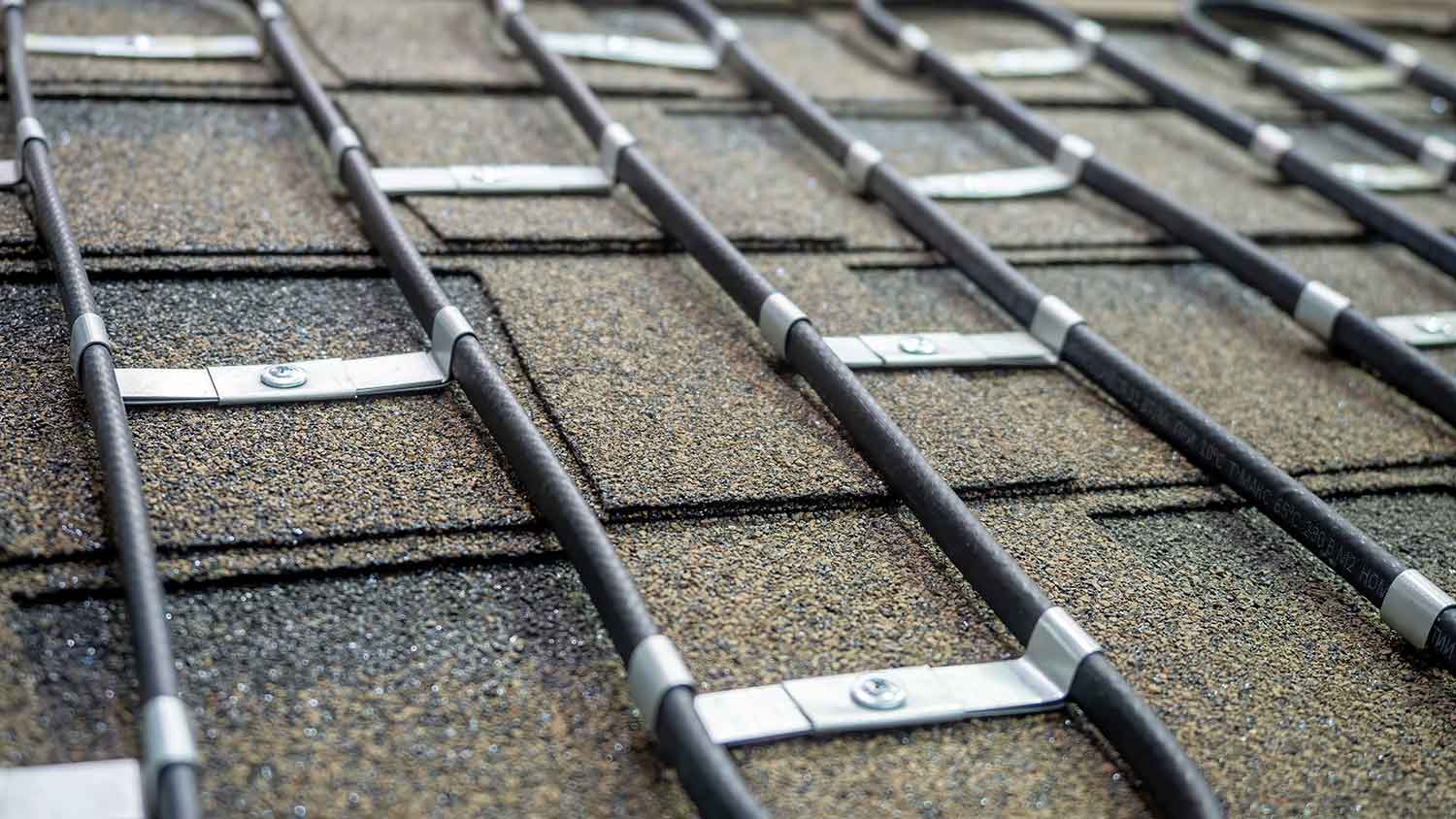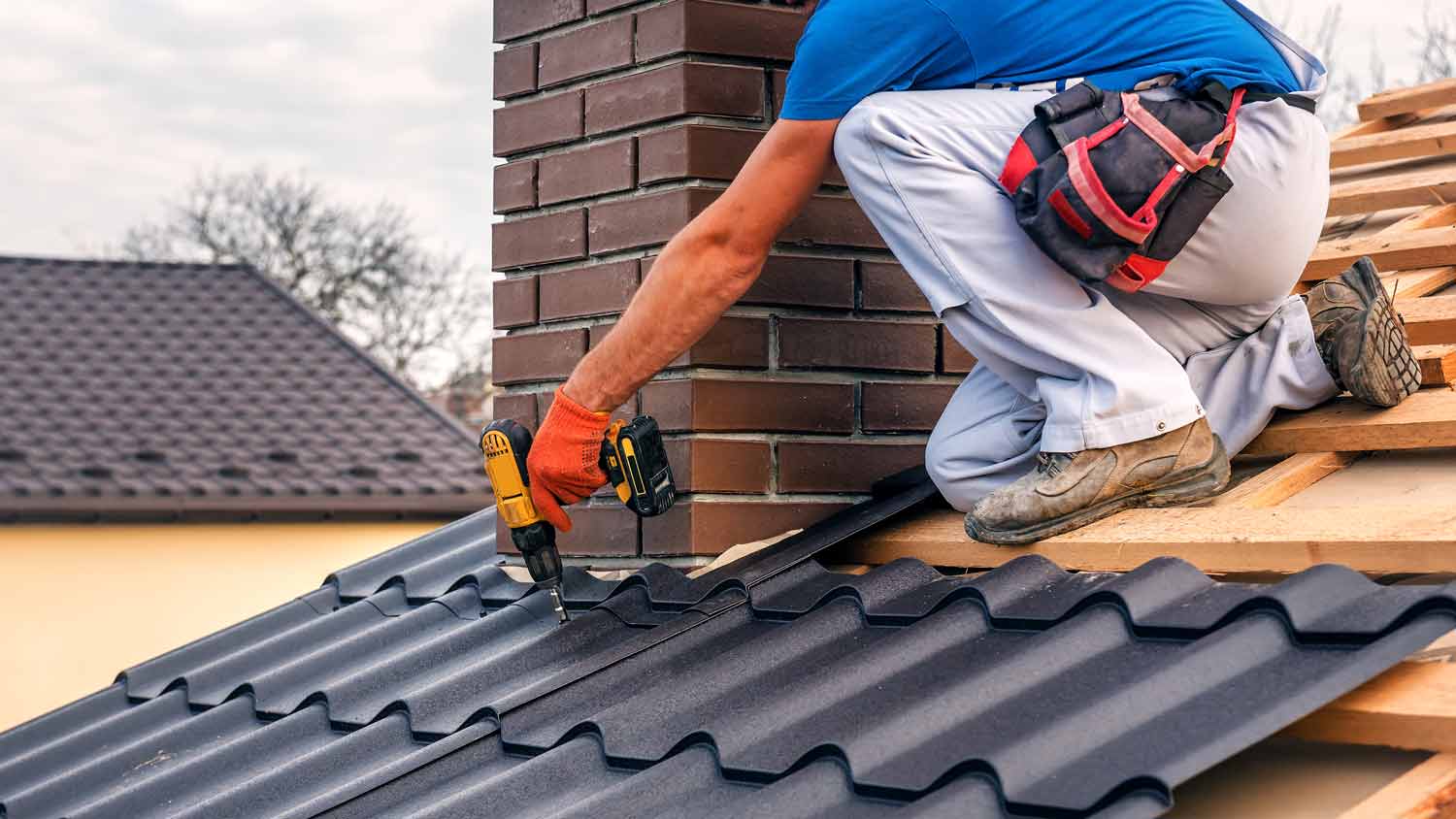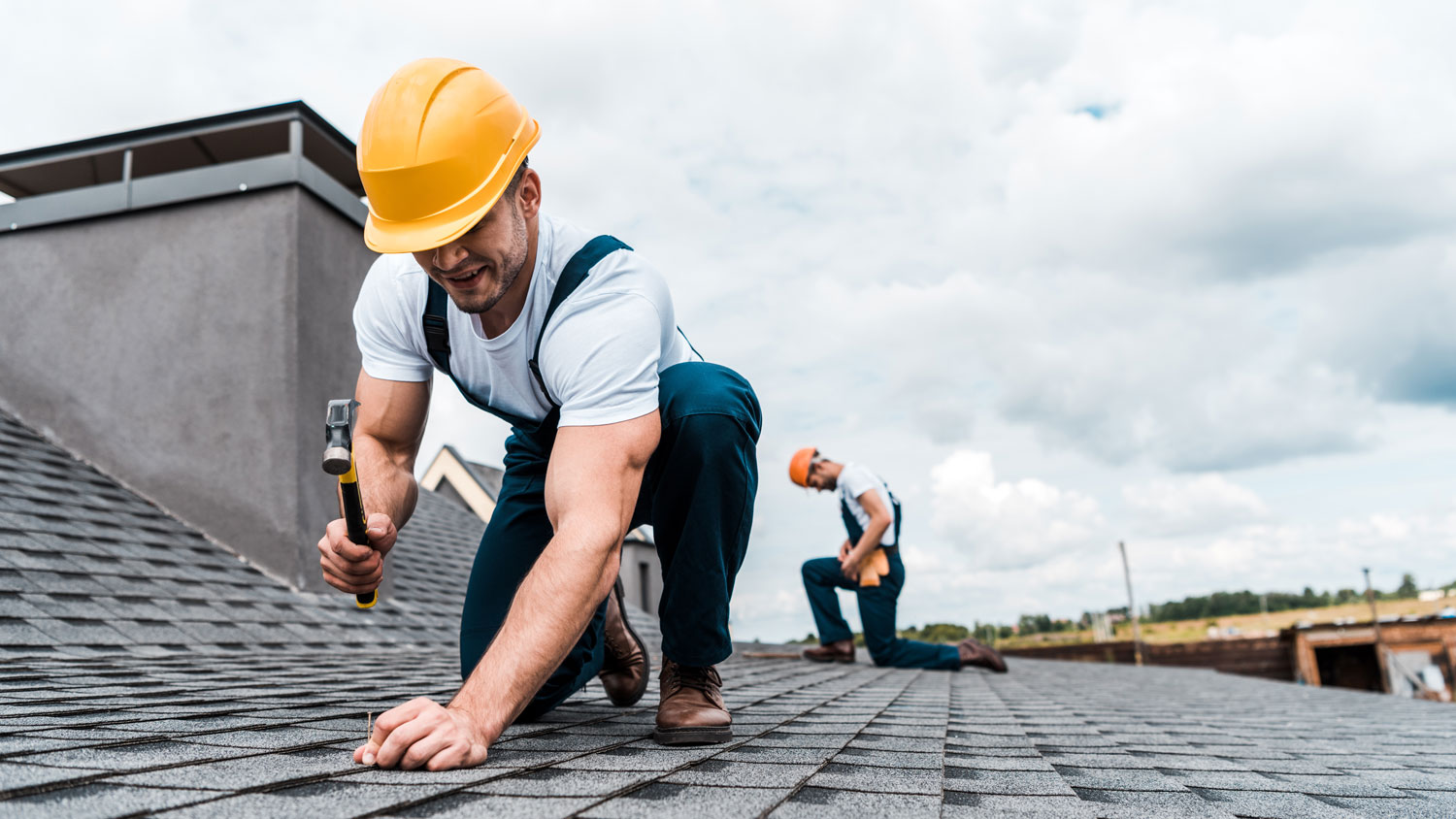
Wondering who installs roof vents and who to call? Roofing contractors handle it best. See other options and how pros get it done
A rubber roof costs an average of $12,000


Average rubber roof costs range from $6,000 to $23,000, with an average total of $12,000, influenced by membrane type and labor.
Climate, roof size, and installation method significantly impact overall expenses.
Rubber roofing is a durable, eco-friendly option that can protect your home for decades.
Hiring a professional roofer ensures maximum lifespan and reduces the likelihood of costly repairs.
This article was updated using automation technology and thoroughly reviewed for accuracy by HomeAdvisor Editor Ryan Noonan.
A rubber roof costs an average between $6,000 and $23,000 or $12,000. That works out to a range of $4 to $13 per square foot. Your exact price hinges on how large the roof is, the membrane type, labor, and the installation system. Set a realistic budget up front and work with a vetted roofing pro so your new membrane stays watertight, low-maintenance, and worry-free for years.
Rubber roofing is a single-ply membrane product—most commonly EPDM, TPO, or PVC—that seals out water on flat or low-slope roofs.
While it costs more than asphalt shingles, many homeowners opt for rubber roofing due to its exceptional durability and robust weather resistance. Most membranes use recycled content and won’t contaminate rainwater runoff, making them an eco-smart upgrade. Rubber roofing is found on low slopes, usually in commercial settings. Sometimes, it's used on residential additions like a flat-topped garage, patio, or sunroom.
Various factors impact rubber roofing project pricing, from the membrane type and performance needs to the size and slope of your roof.
Expect to pay $2 to $6 per square foot in labor to install an EPDM membrane, making it the most budget-friendly option to put down. Local flat roof installers charge between $2 and $6 per square foot to install rubber roofs.
The larger the roof, the more expensive the installation. A roof with higher square footage requires more roofing material. Additionally, the number of corners may impact your cost, as roof installers custom-cut shingles to fit the spaces. Cut shingles can’t be reused, so some of these materials may be thrown away as waste. You’ll still have to pay the full price for the material purchased for the job.
Steeper residential pitches drive up replacement costs because crews need extra safety gear and staging to work securely. Larger home additions with flat or low slopes are better suited for sheet roofing. Overall, residential applications only use a very small percentage of flat roofing.
Depending on your location, roof color can help with energy savings. If you’re aiming for the lowest upfront price, many pros recommend black EPDM topped with a white ballast. Black membranes absorb heat, so adding a light-colored layer can trim cooling bills and extend the roof’s service life.
Check with your local governing and regulatory bodies about building permits or inspections you may need before starting your roof replacement or installation project. The permit cost will depend on local requirements, but you should budget between $100 to $1,000. A more complex roof inspection costs as much as $950.
Climate often determines the type of material used. A roof is subject to extreme temperature changes, wind, hail, and moisture. Some materials perform better in different climates. Local roofing contractors can give you information about which material works best in your area.
Accessibility determines labor costs, so roofing contractors in your area may increase their hourly fees for hard-to-reach areas.
Vents, skylights, A/C units, and architectural protrusions, such as dormer windows, add to an installation’s complexity. Dormers and slope changes require extra time to install and seal correctly.
There are various types to choose from. Your location’s climate and recommended R-values will be the primary factors in determining the best insulation materials. The R-value describes how effectively a material resists heat flow.
The most common insulation material is PolyISO (Polyisocyanurate). PolyISO can be easily cut to fit and maintains its R-value longer than other types of insulation. It comes in sheets ranging from one to three inches thick.
Your roof replacement costs depend on the thickness of the rubber roofing material you choose. The thicker the material, the stronger the installation system or attachment method needed to secure it.
Thickness is sometimes secondary to the type of material you choose, depending on your climate and application. Thickness is measured in mils (one mil equals one-thousandth of an inch) and ranges anywhere from 40 to 90 mils.
The cost of an installation system for your rubber roof varies by thickness and the three attachment methods: ballasted, fastened, and fully adhered.
The ballasted installation method involves weighing down the roof membrane with rock, gravel, or pavers.
This method involves mechanically attaching the membrane to the roof with metal screws and plates under overlapping sections. Seams, protrusions, and edges will vary equipment costs and add time and labor.
The fully adhered method involves gluing sheets of material. You'll need about a five-gallon bucket per square (100 square feet) of roofing, though different types of glue provide different coverage areas. This is the most expensive form of attachment but creates the fewest holes.
Removing an old roof adds $1 to $2 per square foot. Building codes differ from place to place, but if there’s only one layer of old roofing, a new installation may not require the removal of the old roof. Two or more layers require removal.
While a rubber roof can last anywhere from 30 to 40 years, you'll need to schedule routine maintenance to keep it in tip-top shape and well-insulated. Common issues include patching tears and rips, and scheduling an annual roof inspection and cleaning. Roof repair costs vary, but large objects and impacts like a tree branch or hail need repairs to stop further damage to underlying materials like insulation and wood.
The type of membrane affects your rubber roof replacement costs. Like other factors, you can figure out the cost per square foot for each material.
TPO membrane material costs between $4.50 and $14 per square foot, including installation.
EPDM is the least expensive rubber roof to install, with materials and labor costing between $4.25 and $12 per square foot.
It costs between $5.25 and $12.50 per square foot to install a PVC membrane roof.
Other common types include Chlorosulfonated polyethylene (CSPE), Epichlorohydrin (ECH), Neoprene (CR), and Polyisobutylene (PIB). Vulcanized (or set) thermoset can only be bonded to other thermoset types.
A full rubber roof replacement costs more than patchwork repairs, but it may be the better long-term solution in some cases. The age and condition of the roof can help you decide. Rubber roofs last up to 40 years but become more prone to leaks and cracks as they age.
Repairs cost less today, but they can be a stop-gap if the membrane is nearing the end of its life. Call a local roofing professional to inspect the surface and guide you through the most effective long-term solution.
Replacing any roof is a big investment, but a thoughtful plan can keep costs in check and stretch every dollar. Consider the following tips to keep your project within budget:
Explore possible financing programs to help spread out the cost of the roofing project over time.
Request project quotes from several reputable contractors to find the best price in your area.
Look into local, state, or federal rebates or incentives for energy-efficient roof replacement.
Weigh the costs of different materials against their long-term value and expected lifespan.
Apply a roof coating to extend the life of your existing rubber roof and protect it against weather and moisture damage.
Schedule regular maintenance and inspections to extend the lifespan of your new rubber roof.
No place is more important than your home, which is why HomeAdvisor connects homeowners with local pros to transform their houses into homes they love. To help homeowners prepare for their next project, HomeAdvisor provides readers with accurate cost data and follows strict editorial guidelines. After a project is complete, we survey real customers about the costs to develop the pricing data you see, so you can make the best decisions for you and your home. We pair this data with research from reputable sources, including the U.S. Bureau of Labor Statistics, academic journals, market studies, and interviews with industry experts—all to ensure our prices reflect real-world projects.
From average costs to expert advice, get all the answers you need to get your job done.

Wondering who installs roof vents and who to call? Roofing contractors handle it best. See other options and how pros get it done

Wondering who installs roof heat cables? Hire a roofer for safe installation. Compare pros vs. handypeople and see how the job gets done

Who fixes roofs? See who to hire for roof repairs, when to call a roofing contractor or roofer, and what licensed pros provide.

Wondering who to call for a leaky roof? Learn why a roofer—not a plumber—handles roof leak repair and how pros fix the problem.

Wondering who repairs soffit and fascia? Find who to call—roofers, carpenters, or gutter pros—and get smart hiring tips to protect your roof.

Wondering who repairs roof trusses? Learn when to call roofing contractors, why DIY risks collapse, and how pros repair trusses. Get the right help now.